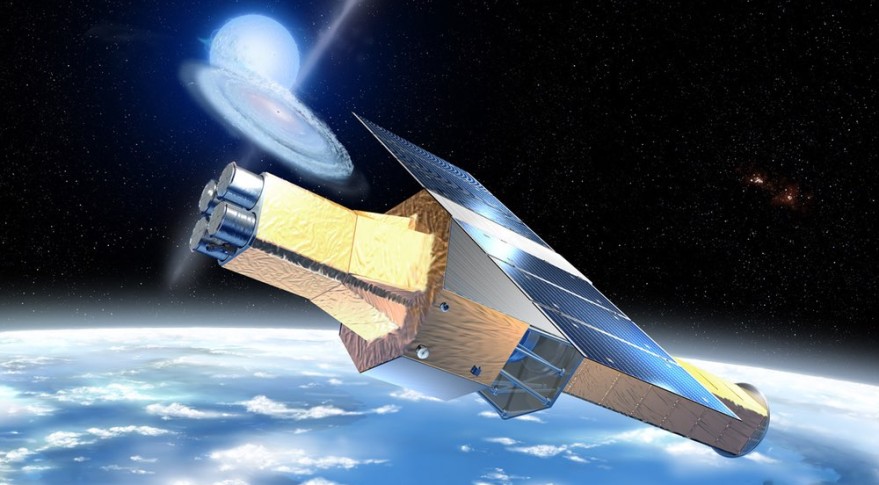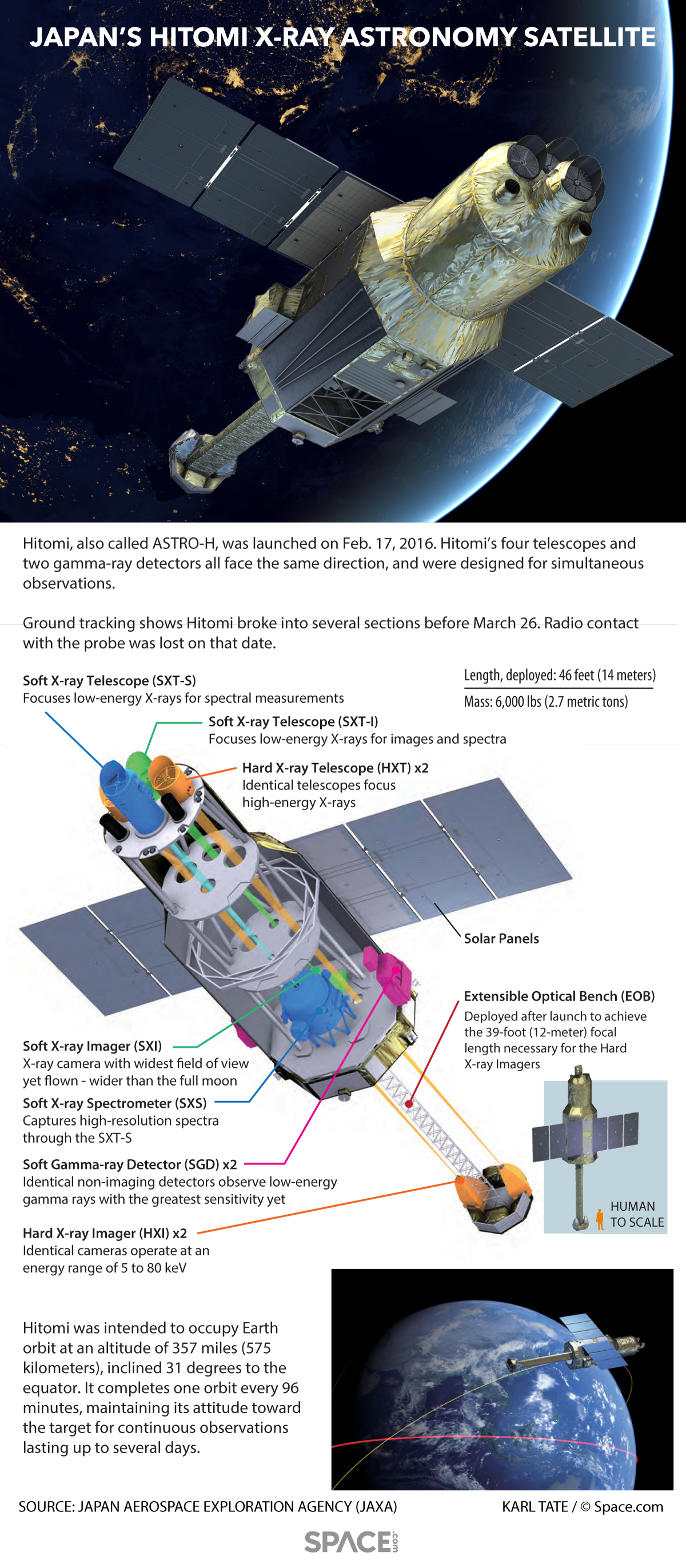NASA and JAXA to Develop Replacement X-Ray Astronomy

WASHINGTON — NASA and the Japanese space agency JAXA will start work this spring on an orbiting X-ray astronomy telescope to replace one lost shortly after launch last year.
In a presentation to the Committee on Astronomy and Astrophysics of the National Academies March 28, Paul Hertz, director of NASA's astrophysics division, said a formal start of the project known as the X-Ray Astronomy Recovery Mission (XARM) will take place shortly after the start of the new Japanese fiscal year April 1.
"We are moving forward with the X-Ray Astronomy Recovery Mission," Hertz said. The mission, he said, was included in the Japanese government's budget for the new fiscal year, pending approval by the country's parliament, the Diet.

XARM is intended to be a replacement for Hitomi, an X-ray astronomy spacecraft launched by JAXA in February 2016 but which malfunctioned in orbit a month and a half later. An investigation determined a chain of errors in the spacecraft's attitude control system, compounded by human error, caused the spacecraft to spin up and its solar panels to break off, depriving the spacecraft of power.
NASA's contribution to XARM will be the same as Hitomi, a soft X-ray spectrometer instrument, Hertz said. "Our deal is to provide the same hardware that we provided last time. We're doing a built-to-print" version of the instrument, he said.
A formal review of NASA's role on XARM, called Key Decision Point B, is planned for June. "We will then officially establish the XARM project," he said.
He did not disclose the cost of XARM for NASA, but in a presentation last summer suggested rebuilding the instrument would cost between $70 and 90 million, spread out from 2017 to 2021. That cost, he said then, could be accommodated with existing planned budgets for NASA's astrophysics division without doing "grievous harm" to other programs.
Get the Space.com Newsletter
Breaking space news, the latest updates on rocket launches, skywatching events and more!
One issue to be worked out with JAXA, Hertz indicated, is the data release policy for XARM. He said he considered it to be a "directed" mission, which would make data from the instrument immediately available to astronomers. This is in contrast to "competed" missions led by a principal investigator, who has an initial proprietary period to analyze the data before it is widely released. That approach is still being negotiated with the Japanese, he said.
Previous versions of the NASA-built X-ray spectrometer instrument flew on two previous JAXA spacecraft, one lost in a 2000 launch failure and another that suffered a helium leak shortly after a 2005 launch that prevented the instrument from working. Hertz, in his presentation, pronounced XARM as "charm." "It does need some luck," he said.
This story was provided by SpaceNews, dedicated to covering all aspects of the space industry.
Join our Space Forums to keep talking space on the latest missions, night sky and more! And if you have a news tip, correction or comment, let us know at: community@space.com.

Jeff Foust is a Senior Staff Writer at SpaceNews, a space industry news magazine and website, where he writes about space policy, commercial spaceflight and other aerospace industry topics. Jeff has a Ph.D. in planetary sciences from the Massachusetts Institute of Technology and earned a bachelor's degree in geophysics and planetary science from the California Institute of Technology. You can see Jeff's latest projects by following him on Twitter.

